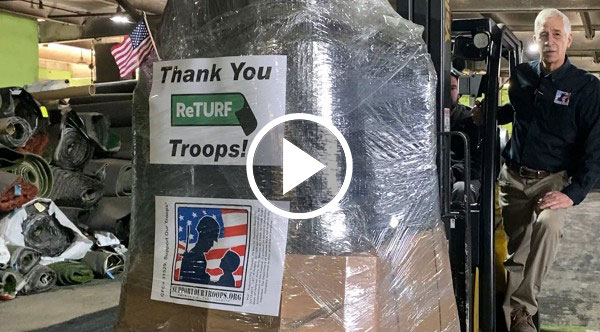- Details
- Hits: 794
You can send the troops a reminder of home by helping fund our Support Our Troops Patriot Brigade® that ships Yellow Ribbon Care Packages to our overseas deployed servicemembers. Last year, Support Our Troops delivered over $40 million of tangible support to America’s military servicemembers with 97 percent of every dollar spent on services. Please take a minute, right now, to help us send the troops a piece of home this holiday season. Please visit our website https://supportourtroops.org/donate to donate to America’s finest today!
Mack Belts™ has stepped up for the troops as a Patriotic Product® team member to support those currently serving. Visit www.MackBelts.com to gear up today with The Toughest Belts on Earth™
- Details
- Hits: 954
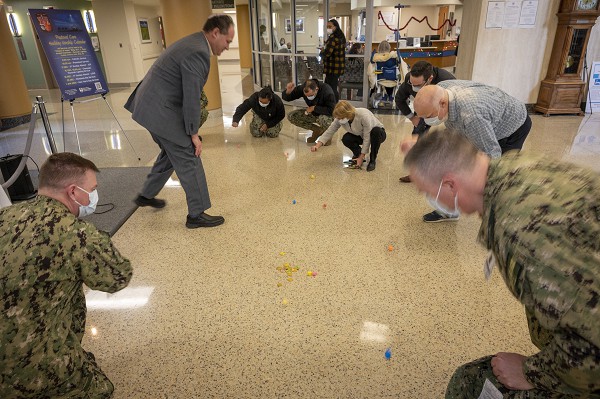
BETHESDA, MD December 19, 2022—Rabbi Randy Brown, of the Department of Pastoral Care at Walter Reed National Military Medical Center (WRNMMC), and Navy Chaplain (Cmdr.) Joseph Blair Sr., clinical chaplain at WRNMMC, hosted a special ceremony marking the first day of Hanukkah at WRNMMC Dec. 19.
This year Hanukkah is Dec. 18 through Dec. 26. During the observance at WRNMMC, Brown and Blair explained the origins of Hanukkah, also known as the “Festival of Lights” commemorating the recovery of Jerusalem and subsequent rededication of the Second Temple at the beginning of the Maccabean Revolt against the Greek Empire in the second century BCE.
- Details
- Hits: 882

UNITED STATES, December 13, 2022—Zoe Merritts, standing left, director of the Presidio of Monterey New Parent Support Program, meets with families during the program's special playgroup Holiday Cookie Decorating event at PoM Army Community Service, Ord Military Community, Dec. 13. Photo by Winifred Brown
- Details
- Hits: 1023
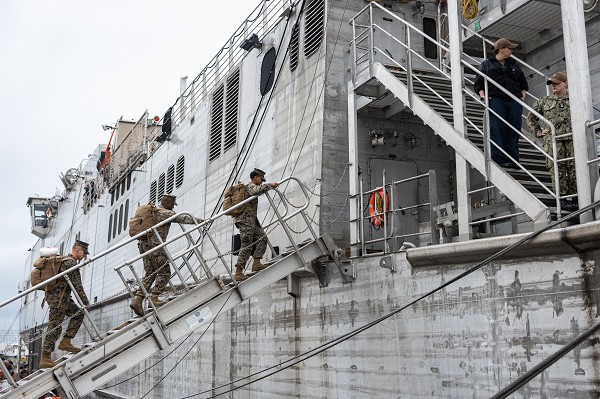 Ljubljana, Slovenia. (December 8, 2022): In this photo by Sergeant Scott Jenkins, U.S. Marines assigned to 2nd Expeditionary Force board the Spearhead-class expeditionary fast transport USNS Trenton. Based out of Camp Lejeune, North Carolina, these Marines will embark on the Trenton as they practice rapidly deploying from aboard Navy ships.
Ljubljana, Slovenia. (December 8, 2022): In this photo by Sergeant Scott Jenkins, U.S. Marines assigned to 2nd Expeditionary Force board the Spearhead-class expeditionary fast transport USNS Trenton. Based out of Camp Lejeune, North Carolina, these Marines will embark on the Trenton as they practice rapidly deploying from aboard Navy ships.
Ljubljana, Slovenia. (December 8, 2022): If you think your daily commute is challenging, imagine what it takes to “get Marines ashore” these days. The finest seaborne infantry in the world, the Marines are of no use aboard ships so getting them there, fast, takes skill and coordination by the crews of America’s fast transport ships.
In the above photo, Marines assigned to the 2nd Expeditionary force begin their daily commute by boarding the USNS Trenton, a fast transport vessel designed to ferry Marines to the battle zone. Ships like the Trenton provide high speed, shallow draft transport for medium-sized cargoes and can reach speeds up to 50 mph. These vessels allow the rapid transport of conventional or special forces and their equipment mid-theater (between large ships and landing craft) and the Trenton has the added advantage of a flight deck.
Based out of Camp Lejeune, North Carolina, the 2nd Marine Expeditionary Unit is comprised of over 2,200 Marines and Sailors capable of rapidly deploying to meet a variety of possible contingencies. Commanded by a colonel, a Marine Expeditionary Unit is deployed from amphibious ships and supported by escort warships and submarines that represent the “tip of the spear” of America’s defense.
- Details
- Hits: 1261
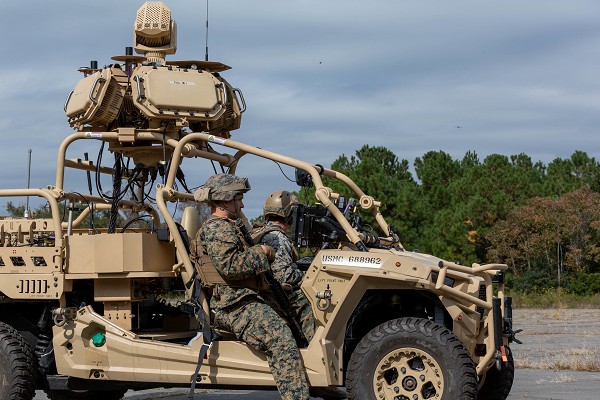 Cherry Point, NC. (December 5, 2022): In this photo by Sergeant Servante Coba, U.S. Marine Corps PFC Clayton Hilemon and Sergeant Alexander Locconielsen, low altitude defense gunners with the 2nd Low Altitude Defense Battalion, transmit an electronic signal to an incoming drone aircraft using the Light Marine Air Defense Integrated System (L-MADIS). The L-MADIS is an electronic attack system that targets enemy drones using signals to destroy or negate their threats to fellow Marines. The 2nd LAAD is part of the 2nd Marine Aircraft Wing which is the aviation element of the 2nd Marine Expeditionary Force.
Cherry Point, NC. (December 5, 2022): In this photo by Sergeant Servante Coba, U.S. Marine Corps PFC Clayton Hilemon and Sergeant Alexander Locconielsen, low altitude defense gunners with the 2nd Low Altitude Defense Battalion, transmit an electronic signal to an incoming drone aircraft using the Light Marine Air Defense Integrated System (L-MADIS). The L-MADIS is an electronic attack system that targets enemy drones using signals to destroy or negate their threats to fellow Marines. The 2nd LAAD is part of the 2nd Marine Aircraft Wing which is the aviation element of the 2nd Marine Expeditionary Force.
Cherry Point, NC. (December 5, 2022): Who would have imagined a military job where Marines cruise the modern battlefield in drone killing machines? What sounds like science fiction is today’s reality as the world’s militaries confront this increasingly deadly threat. As we have witnessed in Russia’s war on Ukraine, drone warfare has proven costly for both sides.
In recent fighting against ISIS, Marines encountered cheap, readily available, commercial drones and soon realized the menace they pose to our forces. American forces responded to this threat through a combination old and new technology backed up by the latest in electronic warfare.
Read more: NOT SCIENCE FICTION: MARINES DRIVING DRONE KILLERS
- Details
- Hits: 1049
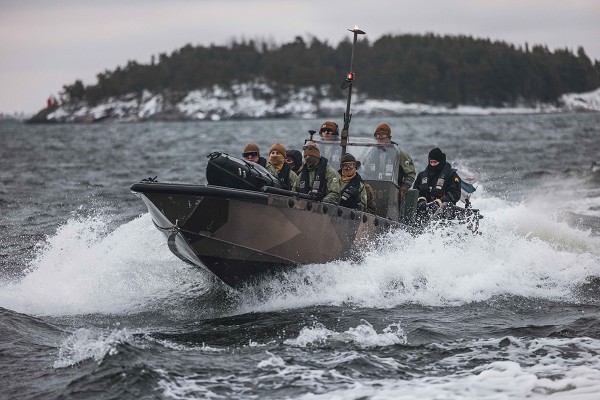 Baltic Sea. (November 25, 2022): In this photo by Corporal Jackson Kirkiewicz, U. S. Marines with Combat Logistical Battalion, 2nd Marines Logistics Group drive a Finnish G-Class landing craft while operating the “Amy”, an unmanned surface vehicle on the Baltic Sea off the coast of Finland.
Baltic Sea. (November 25, 2022): In this photo by Corporal Jackson Kirkiewicz, U. S. Marines with Combat Logistical Battalion, 2nd Marines Logistics Group drive a Finnish G-Class landing craft while operating the “Amy”, an unmanned surface vehicle on the Baltic Sea off the coast of Finland.
Baltic Sea. (November 25, 2022): It’s true, Marines tend to stick near water. While other service branches may see lakes and oceans as obstacles, Marines see a highway they can use to assault the enemy. How the Marines “get to work” has changed dramatically over the years, from the old Higgins boat landing craft in World War II to the modern landing vehicles of today, the Marines nevertheless are at home in their waterborne profession.
In the photo above, the 2nd Marines Logistics Group, composed of approximately 8,000 Marines and Sailors, is training with its Finnish counterparts in the shallow waters of the Baltic Sea. These Marines are expert at combat logistics, the key to supporting effective field operations and to ensure warfighting effectiveness. Based in Camp Lejeune, North Carolina, the 2nd provides general logistical support for the entire Marine Air-Ground Task Force (MAGTF), a complicated and difficult undertaking. Here they are practicing landing operations in a G-Class landing craft manufactured by Finland’s Marine Alutech Watercat. It is primarily used for amphibious landings by, and transportation of, Marines. It has a very low draft (less than 8 inches) and travels at a high speed of 35 mph making it ideal for amphibious assault. The G-Boat can carry up to 8 men or up to one metric ton.



